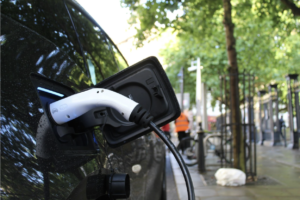President Trump’s decision to negotiate a break for China on tariffs is galling for Japan, which is reeling from auto sector levies that the White House has shown no sign of willingness to lift.
Japan, a top U.S. ally in Asia, was eager to advance trade negotiations with Washington, even as Mr. Trump imposed tariffs on automobiles, and threatened an across-the-board 24 percent tariff on Japanese goods.
While Beijing and others assembled plans for retaliatory tariffs, Japan rushed to Washington for trade negotiations, armed instead with commitments to buy more American goods and boost investments in the United States to $1 trillion.
Now in Tokyo, the sting is palpable.
On Tuesday — one day after the Trump administration agreed to temporarily nix most of its tariffs on China — two of Japan’s top automakers issued dire profit forecasts, weighed down by the effects of U.S. car tariffs.
Honda Motor said that its operating profit would fall nearly 60 percent for the fiscal year that began in April. It attributed the downgrade to a whopping $4.4 billion hit from tariffs.
Nissan Motor suspended its profit forecast for the current year, and said that it would likely swing to an operating loss in the first quarter. The automaker, which was already restructuring its global operations before the U.S. tariffs, said it would slash an additional 11,000 jobs on top of the 9,000 cuts it announced in November.
In Japan there is a sense of disbelief and indignation among business leaders and government officials that the Trump administration backed down on China tariffs, while maintaining punishing levies on allies like Japan with significantly smaller trade imbalances.
The fact that the U.S. prioritized China over many other trade partners in reaching a tariff agreement showed that “at this stage, allies like Japan are at a disadvantage,” said Kazuhiro Maeshima, a professor of American politics and diplomacy at Sophia University in Tokyo. “This can only be seen as disregard,” he said.
Earlier this month, a 25 percent U.S. tariff on vehicle imports was extended to cover auto parts as well. Those two levies are particularly painful for Japan because automobiles and car parts are by far its biggest export to the United States.
Economists estimate that the higher auto tariffs alone could put a big dent in economic growth in Japan this year. Factoring in broader disruptions from U.S. tariff policy, officials have predicted that growth could be more than halved.
That is because the auto sector is the backbone of Japanese industry. Nissan has already planned to shift some manufacturing to the United States to skirt tariffs, and if such moves are replicated by others, it could spark a broader hollowing out of industrial production in Japan.
Japan’s biggest automaker, Toyota Motor, said last week that while it aimed to protect production and jobs in Japan, U.S. tariffs would likely cost it more than $1 billion in April and May alone.
Honda’s chief executive, Toshihiro Mibe, said on Tuesday that the company plans to expand manufacturing in the United States to try to recover some of the billions of dollars of tariff losses it forecast. That includes moving some domestic production of its hybrid Civic to a factory it operates in Indiana, he said.
Japan is also negotiating with the United States regarding the proposed 24 percent “reciprocal” tariff, which the Trump administration announced last month and then delayed until early July. The next round of trade talks is expected later this month, but progress has stalled.
Japan has said lower tariffs on cars are a necessary condition of any trade deal, a position that Prime Minister Shigeru Ishiba reiterated in parliament on Monday.









